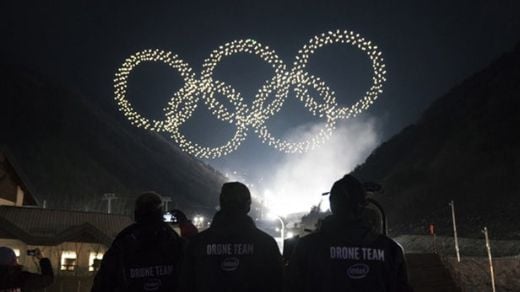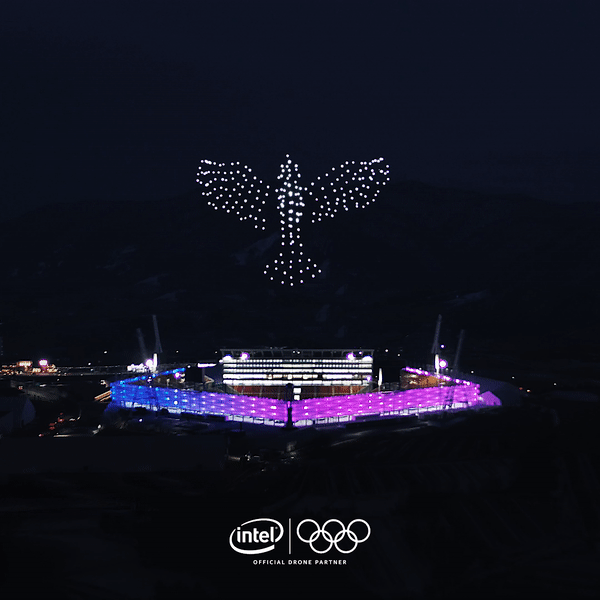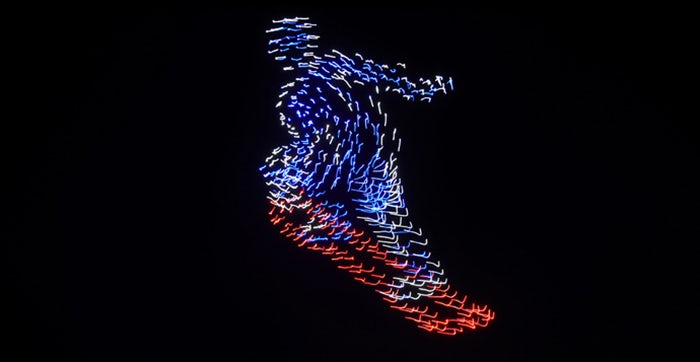
If you were among the millions of people that watched NBC’s replay of the opening ceremony of the 2018 Winter Olympics in PyeongChang, South Korea on Friday, February 9, you might have seen an airborne snowboarder, a bird flapping its wings, and the iconic Olympic Rings light up the skies. While they may have appeared to be digital fireworks, the mesmerizing show was the result of thousands of tiny drones preprogrammed to follow complicated flight paths to form the shape-shifting images.

The drones, created by US semiconductor manufacturer Intel Corp., were first introduced to the world in 2015 in a stunning light show synchronized to the sounds of Beethoven’s Fifth Symphony. In addition to impressing the audience, the seven-minute spectacle, recorded over the Ahrenlohe Airfield near Hamburg, Germany, featured 100 drones, setting a new Guinness World Record for the Most Unmanned Aerial Vehicles (UAVs) airborne simultaneously. In November 2016, the technology giant did it again, this time, with a fleet of 500 re-designed lightweight drones. Dubbed Shooting Stars, they were controlled by one person using a single computer.
Though impressive, neither shows compare to the most recent performance in South Korea, which involved a total of 1,218 Shooting Star drones. While the record-breaking light show appeared to be live to television viewers, it had been prerecorded over the Olympic Stadium in December. Intel officials said they did not want to risk flying the large number of quadcopters over the thousands of spectators and athletes present at the opening ceremony. They had, however, originally planned to launch a reduced version of the show, featuring 300 drones, at the live event. Unfortunately, it had to be canceled at the last minute due to an "impromptu logistical change." Nevertheless, the company did set yet another world record for the most UAVs airborne at the same time.

Designed specifically for light shows, the Shooting Star drones are made from flexible plastic and foam and weigh a mere 330 grams – slightly more than a volleyball. They can stay airborne for between 5 – 8 minutes and, thanks to their built-in LED lights, create over 4 billion color combinations. Programmed using the company’s proprietary algorithms, the entire fleet can be controlled by one person using a single laptop. The best part, of course, is that unlike traditional fireworks shows, the battery-powered quadcopters do not pollute the air!
Resources: Newatlas.com, newsroom.Intel.com
